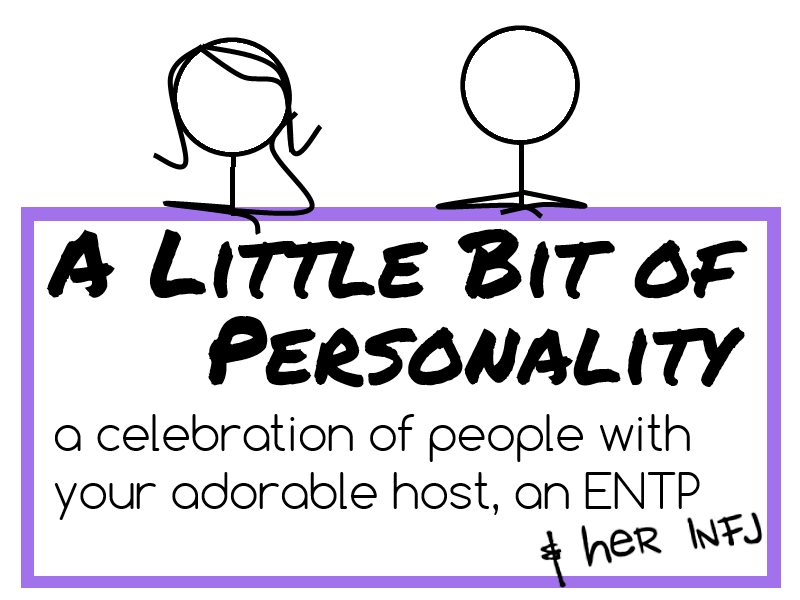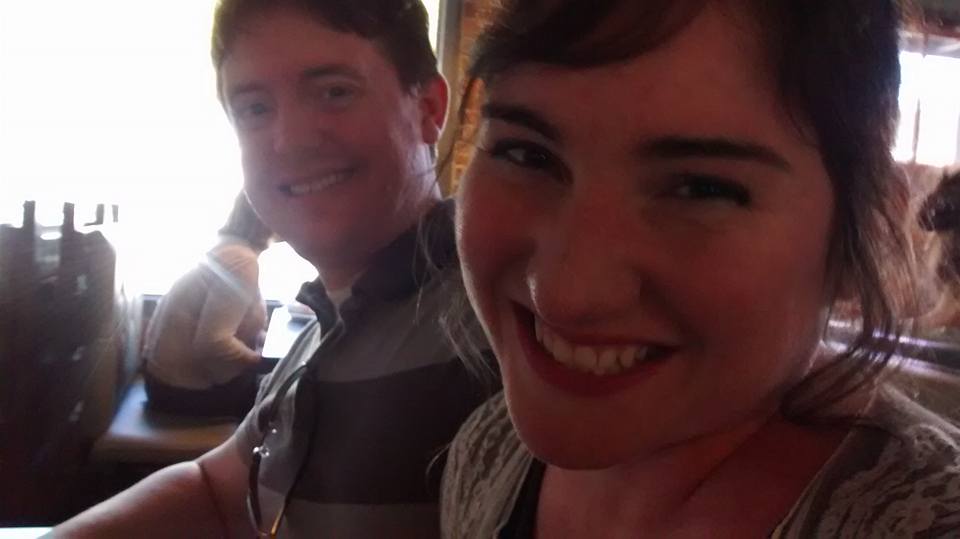In order to understand how people make good decisions, we need to explore *why* they make the decisions they do. Namely, *why* do the different types have the specializations and focuses they do; how do each of us see the world and people and how do we choose to affect the world the way no one else can?
How we view the world is based on how our cognition interacts with our experiences. Based on our cognitive patterns, two different types will interpret the same experiences quite differently. Through those experiences, each type tends toward a different worldview. Now I’m not talking about who you voted for or where you choose to spend your Sundays, though those choices are certainly based on your worldview and personal experiences. No, I’m talking about optimism, pessimism and our intentions of world and self change. I have to note that *each* of these, when healthy, are valid and necessary ways of viewing the world so that as a society we don’t miss anything or go off wildly half-cocked. In fact you can be sure that a broken culture is the result of one or many of the types’ unique strengths being ignored in favor of a few select types. More on that later though.
Not just for the sake of tooting my own horn (though, as an ENTP, you know I love to 😉 ), I want to point out that you’re not going to find this information anywhere else. I see the patterns and I share them; I don’t get them from anywhere “official” because those individual human beings who are just people too, haven’t discovered them yet. Sometimes Tony Stark is better at inventing something in a cave than researchers in a million dollar lab with their heads up their booties could ever be. If the “experts” want to tell the “amateurs” they’re wrong, feel free… they should just prepare to have said butts handed back to them.
Here are the graphs, because I <3 pretty graphs!
The two graphs correspond, the second being a “flipping” of the first, with each type’s place in the first graph corresponding to its place in the second. 🙂
The graph on the top is about the way each type tends to view people.
- I’s, whose primary functions are inside their own heads, concentrate their focus on people on the whole, while E’s, whose primary functions are through taking things in from the world outside themselves, concentrate their focus on individuals.
- F’s, who focus on the meaning of people and things, tend to be more optimistic about people. T’s, who focus on the use of people and things, tend to be more pessimistic about people.
- Idealistic — IF’s tend to think people on the whole are good and meaningful. When they do feel cynical, it tends to be about individuals failing. (“People rock!”)
- Optimistic — EF’s tend to think individuals are good and meaningful. When they do feel cynical, it tends to be about people on the whole failing. (“You rock!”)
- Pessimistic — IT’s tend to think people on the whole are bad and useless. When they do feel optimistic, it tends to be about individuals who matter to them. (“People suck!”)
- Skeptical — ET’s tend to think individuals are bad and useless. When they do feel optimistic, it tends to be about people on the whole who matter to them. (“You suck!”)
The graph on the bottom is about what each type chooses to do about how they view people.
- S’s, who take in the world in a linear, literal, on-the-ground way, care especially about keeping things the same and protecting what is already there, while N’s, who take in the world in a conceptual, non-linear, far-reaching way, care especially about changing things to reach their full potential.
- J’s, who focus on the relationship between actions, consequences and principles of the way things work, specialize in the direction the world and groups are headed in. P’s, who focus on the relationship between data, the way things are, and the motivations of individuals, specialize in exploring the world and people.
- Game Changers — NJ’s focus on changing the world.
- Motivators — NP’s focus on changing individuals, starting with themselves.
- World Protectors — SJ’s focus on keeping the world the same.
- Individualists — SP’s focus on keeping individuals the same, starting with themselves.
- INFJ — The Idealistic Game Changers — tend to think people on the whole are good, so they believe it’s possible to change the bad parts of the world. (The Paladin)
- INFP — The Idealistic Motivators — tend to think people on the whole are good, so they believe it’s possible to change the bad parts of individuals, starting with themselves. (The Ranger)
- ISFJ — The Idealistic World Protectors — tend to think people on the whole are good, so they desire to protect the parts of the world they love. (The Knight)
- ISFP — The Idealistic Individualists — tend to think people on the whole are good, so they desire to keep the parts of people they love the same. (The Explorer)
- ENFJ — The Optimistic Game Changers — tend to think individuals are good, so they believe it’s possible to change the bad parts of the world. (The Veteran)
- ENFP — The Optimistic Motivators — tend to think individuals are good, so they believe it’s possible to change the bad parts of individuals, starting with themselves. (The Standard-Bearer)
- ESFJ — The Optimistic World Protectors — tend to think individuals are good, so they desire to protect the parts of the world they love. (The Cavalry)
- ESFP — The Optimistic Individualists — tend to think individuals are good, so they desire to keep the parts of people they love the same. (The Morale Officer)
- INTJ — The Pessimistic Game Changers — tend to think people on the whole are bad, so they try and change the bad parts of the world. (The Dragon)
- INTP — The Pessimistic Motivators — tend to think people on the whole are bad, so they try and change the bad parts of individuals, starting with themselves. (The Alchemist)
- ISTJ — The Pessimistic World Protectors — tend to think people on the whole are bad, so they try and protect the parts of the world they love. (The Sentinel)
- ISTP — The Pessimistic Individualists — tend to think people on the whole are bad, so they try and keep the parts of people they love the same. (The Weapons Specialist)
- ENTJ — The Skeptical Game Changers — tend to think individuals are bad, so they try and change the bad parts of the world. (The Crusader)
- ENTP — The Skeptical Motivators — tend to think individuals are bad, so they try and change the bad parts of individuals, starting with themselves. (The Swashbuckler)
- ESTJ — The Skeptical World Protectors — tend to think individuals are bad, so they try and protect the parts of the world they love. (The Cannon)
- ESTP — The Skeptical Individualists — tend to think individuals are bad, so they try and keep the parts of people they love the same. (The Spartan)
Each of these are healthy and necessary ways of viewing the world; it’s when a person oversimplifies people as all bad or all good on both an individual and collective level, that they start making errors in judgment. When a person either believes that everything is fine or there is nothing worth saving, they lose perspective and become unhealthy, even if just temporarily.
As people, we do this when we are afraid that the area we specialize in and uniquely bring to the table, is in jeopardy. Whether it’s IJ’s trying to protect what they want the world to be, EJ’s fearing their group will come to naught, IP’s feeling like the area they specialize in is meaningless or EP’s terror that who they are doesn’t matter, when we feel like everything that made our lives and the world matter to us is in danger of being lost, we hold on to extremes in positive or negative judgments to try and maintain our sanity.
As an ENTP, for example, my specialization is Individual Potential. As I interact with the world, my cognitive functions demonstrate to me conceptually just what people can be (which suggests to me that people on the whole are good), but I also excel at character judgments, which demonstrates to me that people rarely live up to that potential (that’s where the “individuals suck” part comes in), so I figure, even though I can’t change what other people do, I can start with myself and try to be as awesome as I possibly can (try and change the bad parts of myself).
All that is good and how I’m supposed to function. I get into trouble, however, when (usually because an individual disappoints me) I fear that everything I’ve tried to achieve of my own individual potential is all going to come to naught. I start fearing that not only are a lot of individuals bad, but maybe there isn’t anyone in the whole world who will ever see my potential or apply what I say to themselves. I fear I am of no use (a very T way of thinking of it) and get grumpy, mean and start making terrible decisions.
So how can we snap out of it, overcome fear and return to sanity? How can we know what decisions to make when we’re scared? I’ll explain in Part 2 – Playing to Your Strengths 😀






























Recent Comments